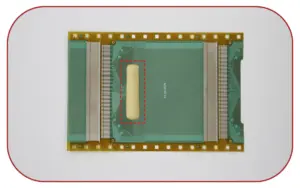Increasing demand for OLED panel display driver chips (DDI) is driving significant changes to production processes. The transition to a 28nm process is underway, according to DigiTimes, with Apple leading the charge by requesting this technology for their OLED DDI chips. The 28nm process technology, introduced in 2009 is a mature and stable process in advanced semiconductor manufacturing and while the industry has shifted towards smaller processes like 5nm for smartphones, the demand for mature processes remains high particularly, as in this case, for DDI.

Major wafer foundries have been gradually expanding their production capacity for the 28nm chips. The transition is predicted to take place gradually, with the output of 28nm OLED DDI chips expected to surpass that of the 40nm process by 2024. The move towards the 28nm process reflects a broader industry trend, as wearable devices are also contributing to the rising demand for these advanced chips. Consequently, industry experts anticipate a sustained double-digit annual growth rate for the foreseeable future.
In Q1’23, Trend Force was saying panel makers have been aggressively lowering the prices of DDIs in response to the declining prices of panels. However, foundries (where DDIs are manufactured) have not made significant price adjustments. The question of whether enough DDI stock will be ready in time for the peak demand in the third quarter is uncertain. Suppliers have become hesitant to stockpile ICs, and if there is insufficient supply or production capacity, DDIs might face tight supply in the short term. This could have potential effects on the entire panel supply chain.
However, Omdia, looking at the changeover in technology, says all wafer foundries have bolstered their production capacity on 28nm. In fact, Omdia predicts that by 2025, 60% of OLED DDI production will be at 28nm, and that it is around 40% today. DDI supply chain issues in China will still remain of some concern, as a result of the existing geopolitical tensions and sanctions, but by all indications, the display industry is finding ways to adapt and expand. If there is a bifurcation of DDI supply chains between China and the rest of the world then it is not stopping the transition to 28nm, and it may strengthen China’s display manufacturers.

